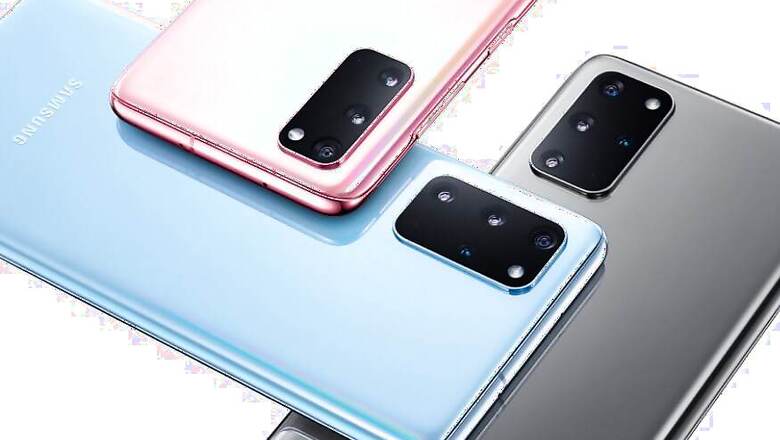
views
The much-awaited launch has finally been done. The first big phone launch of the year arrived from the house of Samsung, with the Korean tech giant unveiling the Galaxy S20 smartphone line-up that includes the Galaxy S20, Galaxy S20+ and the Galaxy S20 Ultra, as well as the Galaxy Z Flip foldable phones. It was perhaps to be expected that Samsung would focus on the photography performance of their new and upcoming Android flagship phones, and they well and truly have. And nothing defines this better than the Samsung Galaxy S20 Ultra.
Let us take a look at the headline specs first. And we may as well start with the phone that sits at the top of the ladder—the Samsung Galaxy S20 Ultra. The highlight undoubtedly is the 108-megapixel wide camera that sits at the back along with a 48-megapixel periscope camera, a 12-megapixel ultrawide camera and a Time of Flight depth sensor. The Galaxy S20 Ultra also gets 10x hybrid zoom, but what you need to probably focus on a bit more is the 100x space zoom.
But how does Samsung achieve the 100X zoom? The 10x Hybrid Zoom is the starting point thanks to the optical hardware in place, which includes a 4x telephoto lens that is paired with the 48-megapixel sensor. This is if you are using up to 3.9x zoom. For zoom between 4x and 10x, which is also being referred to as the lossless hybrid zoom, there is also the additional pixel binning which adds the data of multiple pixels into one larger pixel and some amount of sensor cropping as well. This is where Artificial Intelligence (AI) really kicks in, the moment you zoom upwards of 10x and up to 100x. the Super Resolution Zoom relies on the camera AI to ensure details are not lost with the digital zoom. But well, no matter how good the AI is, digital zoom by the very way it works, will compromise some amount of finer detailing, though Samsung would hope pixel binning takes care of that to a certain extent.
This is definitely the first time we are seeing 100x zoom on a smartphone but isn’t actually the first time we have seen super capable zoom on smartphones. This takes me back to my experience with the Huawei P30 Pro, which topped out at 50x zoom. The way that worked is it used an 8-megapiel telephoto camera paired with a 40-megapixel primary camera sensor. While 50x was tremendous fun, there was a performance ceiling which was achieved beyond 30x in terms of detailing. And if it was a low light shot, clarity was significantly compromised, since the higher resolution sensors have much smaller pixels that don’t do as well with capturing enough light—and most certainly struggle in a stressful environment involving generous amounts of zoom while taking a photo.
Samsung immediately has the advantage in terms of the optical hardware in place, with an incredible 108-megapixel primary sensor and a 48-megapixel periscope sensor in play. There is a lot more data for the image processing AI to play with, and more data is usually better for detailing in photos.
Speaking of low light, how does Samsung intend to deal with the potential issues with low-light performance? For starters, the low-light mode will capture multiple shots of the same scene that you are trying to click, at different exposure levels, and then merge them together into the final image that you see—the best elements from each of the shots the phone took one after the other will be used, before these snaps are discarded and you are presented with the final image.
This is also the first time Samsung phones will shoot 8K video. That’s not all, because you will also be able to extract 330-megapixel still images from the video as it is being recorded.
All this potential photography magic of the Samsung Galaxy S20 Ultra doesn’t come cheap though. The prices for this will start around $1399.99 (around Rs 99,700 before taxes) when it goes for preorders in some countries later this month.


















Comments
0 comment